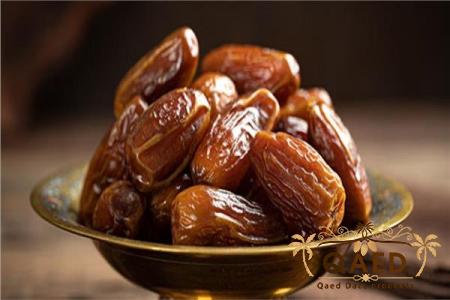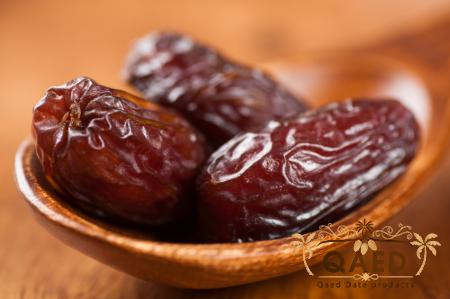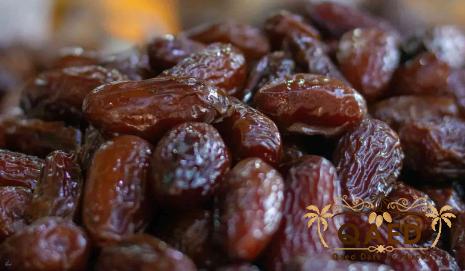Dates are one of the most popular dried fruits worldwide, known for their sweet taste and numerous health benefits. Medjool and Barhi dates are two varieties of dates that are highly sought after for their unique flavors and textures. In this article, we will explore the differences between Medjool and Barhi dates, including their taste, texture, nutritional value, and culinary uses. Medjool dates are known for their rich and caramel-like flavor. They are often referred to as the “king of dates” due to their large size and indulgent taste. Medjool dates have a soft and chewy texture, making them a popular choice for snacking or as a natural sweetener in recipes. These dates are high in natural sugars, giving them a satisfyingly sweet taste that pairs well with a variety of foods. On the other hand, Barhi dates have a unique flavor profile that sets them apart from other date varieties. Barhi dates are less sweet than Medjool dates and have a slightly nutty taste with hints of caramel and honey. These dates are smaller in size and have a firmer texture compared to Medjool dates.

.
 Barhi dates are often enjoyed as a standalone snack or used in desserts and baked goods to add a touch of sweetness. In terms of nutritional value, both Medjool and Barhi dates are packed with essential vitamins and minerals. Dates are a good source of dietary fiber, which aids in digestion and helps keep you feeling full. They are also rich in antioxidants, which help protect the body against free radicals and reduce inflammation. Dates contain natural sugars, making them an energy-boosting snack that can help satisfy cravings for sweets in a healthier way. While both Medjool and Barhi dates offer similar health benefits, they do have some differences in their nutrient profiles. Medjool dates are slightly higher in calories and carbohydrates than Barhi dates, making them a more energy-dense option. Barhi dates, on the other hand, are lower in calories and carbohydrates, making them a lighter choice for those watching their calorie intake. In terms of culinary uses, Medjool and Barhi dates can both be incorporated into a wide range of dishes to add natural sweetness and flavor. Medjool dates are often used in desserts like date squares, energy balls, and sticky toffee pudding. Their soft texture makes them easy to blend into smoothies or oatmeal for a boost of sweetness.
Barhi dates are often enjoyed as a standalone snack or used in desserts and baked goods to add a touch of sweetness. In terms of nutritional value, both Medjool and Barhi dates are packed with essential vitamins and minerals. Dates are a good source of dietary fiber, which aids in digestion and helps keep you feeling full. They are also rich in antioxidants, which help protect the body against free radicals and reduce inflammation. Dates contain natural sugars, making them an energy-boosting snack that can help satisfy cravings for sweets in a healthier way. While both Medjool and Barhi dates offer similar health benefits, they do have some differences in their nutrient profiles. Medjool dates are slightly higher in calories and carbohydrates than Barhi dates, making them a more energy-dense option. Barhi dates, on the other hand, are lower in calories and carbohydrates, making them a lighter choice for those watching their calorie intake. In terms of culinary uses, Medjool and Barhi dates can both be incorporated into a wide range of dishes to add natural sweetness and flavor. Medjool dates are often used in desserts like date squares, energy balls, and sticky toffee pudding. Their soft texture makes them easy to blend into smoothies or oatmeal for a boost of sweetness.
..
 Barhi dates work well in savory dishes like salads, tagines, and stuffing for meats. Their nutty flavor adds a depth of taste to savory recipes and balances out richer ingredients. When it comes to choosing between Medjool and Barhi dates, personal preference plays a significant role. If you enjoy a sweeter and softer date, Medjool dates are the perfect choice. Their rich caramel flavor and chewy texture make them a delightful snack or addition to recipes. On the other hand, if you prefer a milder and nuttier taste, Barhi dates are a great option. Their firmer texture and subtle flavors make them versatile for both sweet and savory dishes. In conclusion, both Medjool and Barhi dates are delicious and healthy options for incorporating into your diet. Whether you prefer the indulgent sweetness of Medjool dates or the nutty flavor of Barhi dates, both varieties offer a satisfying and nutritious snack option. Whichever you choose, dates are a versatile ingredient that can elevate a wide range of dishes and add a natural sweetness that is unmatched by other fruits. Dates have been enjoyed for centuries for their natural sweetness and health benefits. Medjool and Barhi dates are two popular varieties that offer distinct flavors and textures, giving consumers a range of options to choose from based on their preferences and culinary needs. In addition to their flavor and texture differences, Medjool and Barhi dates also vary in their appearance. Medjool dates are large and plump with a wrinkled skin that ranges in color from amber to dark brown. Their size and shape make them a striking addition to charcuterie boards or dessert platters. Barhi dates, on the other hand, are smaller and rounder with a smooth, glossy skin that can be a light golden color or reddish-brown. The appearance of Barhi dates adds a touch of elegance to dishes and can be a visually appealing ingredient in recipes. One of the key differences between Medjool and Barhi dates is how they are commonly consumed. Medjool dates, with their soft and caramel-like texture, are often enjoyed as a standalone snack.
Barhi dates work well in savory dishes like salads, tagines, and stuffing for meats. Their nutty flavor adds a depth of taste to savory recipes and balances out richer ingredients. When it comes to choosing between Medjool and Barhi dates, personal preference plays a significant role. If you enjoy a sweeter and softer date, Medjool dates are the perfect choice. Their rich caramel flavor and chewy texture make them a delightful snack or addition to recipes. On the other hand, if you prefer a milder and nuttier taste, Barhi dates are a great option. Their firmer texture and subtle flavors make them versatile for both sweet and savory dishes. In conclusion, both Medjool and Barhi dates are delicious and healthy options for incorporating into your diet. Whether you prefer the indulgent sweetness of Medjool dates or the nutty flavor of Barhi dates, both varieties offer a satisfying and nutritious snack option. Whichever you choose, dates are a versatile ingredient that can elevate a wide range of dishes and add a natural sweetness that is unmatched by other fruits. Dates have been enjoyed for centuries for their natural sweetness and health benefits. Medjool and Barhi dates are two popular varieties that offer distinct flavors and textures, giving consumers a range of options to choose from based on their preferences and culinary needs. In addition to their flavor and texture differences, Medjool and Barhi dates also vary in their appearance. Medjool dates are large and plump with a wrinkled skin that ranges in color from amber to dark brown. Their size and shape make them a striking addition to charcuterie boards or dessert platters. Barhi dates, on the other hand, are smaller and rounder with a smooth, glossy skin that can be a light golden color or reddish-brown. The appearance of Barhi dates adds a touch of elegance to dishes and can be a visually appealing ingredient in recipes. One of the key differences between Medjool and Barhi dates is how they are commonly consumed. Medjool dates, with their soft and caramel-like texture, are often enjoyed as a standalone snack.
…
 Their rich flavor makes them a satisfying treat on their own or paired with nuts and cheeses for a simple, yet decadent, appetizer. Medjool dates can also be stuffed with nut butter or cream cheese for a more elevated snack option. On the other hand, Barhi dates are often used in cooking and baking to add natural sweetness and a hint of nutty flavor to dishes. Their firmer texture holds up well in recipes and is especially well-suited for blending into smoothies, baking into cookies, or chopping up to sprinkle over salads. The subtle taste of Barhi dates complements both sweet and savory dishes, adding a unique depth of flavor that enhances the overall dish. In terms of consistency, Medjool dates are known for their consistency in flavor and texture. Their rich caramel flavor and soft chewy texture make them a reliable option for those seeking a consistent taste experience with each date. Barhi dates, while also delicious, can vary slightly in flavor and texture depending on their ripeness. Some Barhi dates may be sweeter and softer, while others may be more nutty and firm. This variability adds an element of surprise and excitement to dishes made with Barhi dates. In terms of availability, Medjool dates are more widely accessible in grocery stores and specialty food markets due to their popularity and demand. They are often sold in bulk or packaged in smaller quantities for individual purchase. Barhi dates, on the other hand, may be less commonly found in stores but can often be sourced from farmers’ markets or specialty food stores that carry a wide selection of exotic fruits. Both varieties can also be purchased online from reputable suppliers for convenience. When it comes to storage, both Medjool and Barhi dates should be stored in a cool, dry place away from direct sunlight to maintain their freshness and flavor. Medjool dates can be stored in an airtight container at room temperature for several months or in the refrigerator for longer shelf life. Barhi dates can also be stored in a similar manner, but it is recommended to consume them within a few weeks to enjoy them at their best quality. In conclusion, Medjool and Barhi dates are two distinct varieties of dates that offer unique flavors, textures, and culinary uses. Whether you prefer the rich sweetness of Medjool dates or the nutty undertones of Barhi dates, both varieties are versatile ingredients that can elevate a wide range of dishes. From snacking to baking to cooking, dates are a wholesome and delicious addition to any culinary repertoire. Whichever variety you choose, incorporating dates into your diet is a flavorful way to enjoy the natural sweetness and health benefits that these fruits have to offer.
Their rich flavor makes them a satisfying treat on their own or paired with nuts and cheeses for a simple, yet decadent, appetizer. Medjool dates can also be stuffed with nut butter or cream cheese for a more elevated snack option. On the other hand, Barhi dates are often used in cooking and baking to add natural sweetness and a hint of nutty flavor to dishes. Their firmer texture holds up well in recipes and is especially well-suited for blending into smoothies, baking into cookies, or chopping up to sprinkle over salads. The subtle taste of Barhi dates complements both sweet and savory dishes, adding a unique depth of flavor that enhances the overall dish. In terms of consistency, Medjool dates are known for their consistency in flavor and texture. Their rich caramel flavor and soft chewy texture make them a reliable option for those seeking a consistent taste experience with each date. Barhi dates, while also delicious, can vary slightly in flavor and texture depending on their ripeness. Some Barhi dates may be sweeter and softer, while others may be more nutty and firm. This variability adds an element of surprise and excitement to dishes made with Barhi dates. In terms of availability, Medjool dates are more widely accessible in grocery stores and specialty food markets due to their popularity and demand. They are often sold in bulk or packaged in smaller quantities for individual purchase. Barhi dates, on the other hand, may be less commonly found in stores but can often be sourced from farmers’ markets or specialty food stores that carry a wide selection of exotic fruits. Both varieties can also be purchased online from reputable suppliers for convenience. When it comes to storage, both Medjool and Barhi dates should be stored in a cool, dry place away from direct sunlight to maintain their freshness and flavor. Medjool dates can be stored in an airtight container at room temperature for several months or in the refrigerator for longer shelf life. Barhi dates can also be stored in a similar manner, but it is recommended to consume them within a few weeks to enjoy them at their best quality. In conclusion, Medjool and Barhi dates are two distinct varieties of dates that offer unique flavors, textures, and culinary uses. Whether you prefer the rich sweetness of Medjool dates or the nutty undertones of Barhi dates, both varieties are versatile ingredients that can elevate a wide range of dishes. From snacking to baking to cooking, dates are a wholesome and delicious addition to any culinary repertoire. Whichever variety you choose, incorporating dates into your diet is a flavorful way to enjoy the natural sweetness and health benefits that these fruits have to offer.











Your comment submitted.